Difference between revisions of "Sampling tools for the marine environment"
| Line 1: | Line 1: | ||
| + | <ref name="maine" >http://www.usm.maine.edu/gulfofmaine-census/Docs/Technology/STPC.htm#bottomtraw</ref>All methods of physical capture are inherently selective. Small fish may pass through large-meshed nets; large fish may out-swim trawls; gill nets will catch fish mainly of a certain size range. Fish may react differently to fishing gear with respect to species, size, biological state, environmental conditions including ambient light and the acoustic noise field, among many other factors. | ||
| + | |||
| + | <ref>Steele, J.H.; Thorpe, S.A.; Turekian, K.K. (Ed.). (2001). Encyclopedia of ocean sciences. Academic Press: San Diego, CA (USA). 6 vol. p748-749</ref>|This is why organisms are subdivided out of practical necessity, in that the sampling approach and sample size that are appropriate for one group are often inappropriate for another. The disparity in appropriate techniques for different sizes of groups of organisms has contributed greatly to the paucity of studies on more than one taxonomic grouping at a given locale. | ||
| + | |||
| + | Unfortunately, where conflicting conclusions have been drawn patterns in different groups of organisms, it is rarely possible to know whether the patterns truly vary among groups or merely reflect differences in sampling efforts | ||
| + | |||
| + | |||
| + | |||
| + | |||
| + | |||
| + | |||
| + | |||
| + | |||
| + | |||
| + | |||
| + | |||
| + | |||
| + | |||
| + | |||
[[Image:pelagic trawl1.jpg|right|pelagic trawl <ref name="maine" >http://www.usm.maine.edu/gulfofmaine-census/Docs/Technology/STPC.htm#bottomtraw</ref>|frame]] | [[Image:pelagic trawl1.jpg|right|pelagic trawl <ref name="maine" >http://www.usm.maine.edu/gulfofmaine-census/Docs/Technology/STPC.htm#bottomtraw</ref>|frame]] | ||
[[Image:pelagic trawl2.jpg|right|pelagig trawl <ref >http://www.fao.org/fi/website/FIRetrieveAction.do?dom=geartype&fid=207</ref>|frame]] | [[Image:pelagic trawl2.jpg|right|pelagig trawl <ref >http://www.fao.org/fi/website/FIRetrieveAction.do?dom=geartype&fid=207</ref>|frame]] | ||
Revision as of 12:17, 6 September 2007
[1]All methods of physical capture are inherently selective. Small fish may pass through large-meshed nets; large fish may out-swim trawls; gill nets will catch fish mainly of a certain size range. Fish may react differently to fishing gear with respect to species, size, biological state, environmental conditions including ambient light and the acoustic noise field, among many other factors.
[2]|This is why organisms are subdivided out of practical necessity, in that the sampling approach and sample size that are appropriate for one group are often inappropriate for another. The disparity in appropriate techniques for different sizes of groups of organisms has contributed greatly to the paucity of studies on more than one taxonomic grouping at a given locale.
Unfortunately, where conflicting conclusions have been drawn patterns in different groups of organisms, it is rarely possible to know whether the patterns truly vary among groups or merely reflect differences in sampling efforts
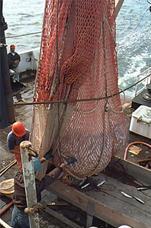
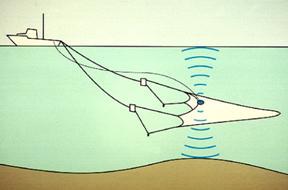
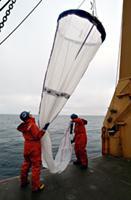
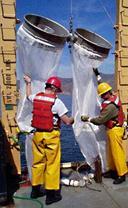
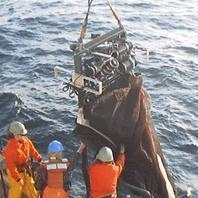
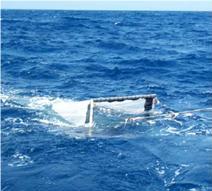
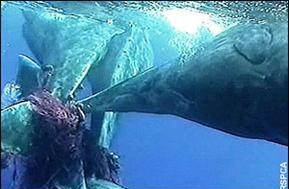
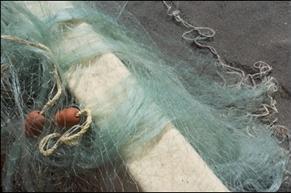
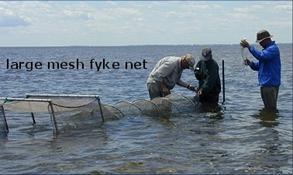
References
- ↑ 1.0 1.1 1.2 1.3 http://www.usm.maine.edu/gulfofmaine-census/Docs/Technology/STPC.htm#bottomtraw
- ↑ Steele, J.H.; Thorpe, S.A.; Turekian, K.K. (Ed.). (2001). Encyclopedia of ocean sciences. Academic Press: San Diego, CA (USA). 6 vol. p748-749
- ↑ http://www.fao.org/fi/website/FIRetrieveAction.do?dom=geartype&fid=207
- ↑ http://oceanexplorer.noaa.gov/technology/vessels/mcarthur/mcarthur.html
- ↑ http://www.dnr.sc.gov/marine/sertc/sampling%20methods.pdf
- ↑ http://www.telegraph.co.uk/news/main.jhtml?xml=/news/2007/04/18/nnet118.xml
- ↑ http://the.honoluluadvertiser.com/dailypix/2006/Jul/23/FPI607230302V2_b
- ↑ http://glei.nrri.umn.edu/default/fykenet.htm